The World Heritage site of Avebury Stone Circle and The English Heritage of Stonehenge

Explore the history of Neolithic Britain at Avebury and Stonehenge. Discover whether these iconic stone circles were rebuilt over time. Nestled in the picturesque landscapes of Wiltshire in Southern England, the ancient stone circles of Avebury and Stonehenge continue to captivate and mystify historians and tourists alike. These iconic landmarks have stood the test of time, inspiring countless theories and controversies surrounding their origins and construction. The enigmatic nature of these megalithic structures has fueled a deep fascination with uncovering the truth behind their existence.
As we delve into the histories of Avebury Henge and Stone Circle and Stonehenge, we aim to shed light on the enduring mysteries surrounding these remarkable sites. Both the Avebury World Heritage site (the largest stone circle in Britain) and Stonehenge have played a significant role in shaping our understanding of prehistoric civilizations and their architectural achievements. These stone circles have left an indelible mark on history, from legends of giants to modern-day archaeological discoveries.
Silbury Hill is also located in Wiltshire, England. It is an ancient man-made mound close to two famous prehistoric sites, Stonehenge and Avebury. Silbury Hill is believed to be one of the largest and oldest man-made mounds in Europe. It is thought to have been constructed around 2400 BC and is believed to have had a significant ceremonial or religious purpose for the people who built it. However, the exact reason for its construction remains a mystery and continues to be the subject of much speculation and debate among historians and archaeologists.

Were the Stone Circles of Avebury and Stonehenge Rebuilt?
Through this exploration, we will seek to understand the theories and controversies surrounding whether the stone circles were once rebuilt or modified throughout history. By examining archaeological evidence, we hope to reveal the true origins of Avebury and Stonehenge, offering insights into the enduring legacy of these ancient wonders. Join us as we embark on a journey to unravel the secrets of Avebury and Stonehenge, shedding light on their enigmatic past.

History of the Avebury Stone Circle
Avebury is a Neolithic henge monument containing three stone circles around Avebury village in Wiltshire, southwest England. Due to its uniqueness and cultural significance, it is one of the best-known prehistoric sites in Britain and a world-class tourist attraction. In 1986, UNESCO inscribed the site on their list of World Heritage Sites.
The history of Avebury dates back over 5,000 years and remains largely shrouded in mystery. The construction of the stone circles and henge at Avebury began around 2600 BCE, during the Neolithic period, making it roughly contemporary with Stonehenge.
The purpose and meaning behind these ancient structures have been the subject of much debate among archaeologists, historians, and enthusiasts alike. While some scholars believe they served religious or ceremonial purposes, others argue that they were used for astronomical observations or as part of rituals related to ancestor worship.
Like Stonehenge, Avebury has also undergone periods of restoration and reconstruction throughout its history. In the 17th century, large stones were broken up by villagers for building materials until King James I ordered a halt to this destruction in 1620.
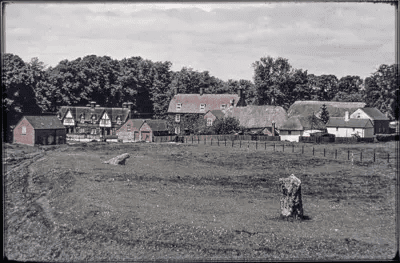
Subsequent preservation efforts led to the re-erection of some fallen stones, and the excavation of the site by archaeologists in the 20th century shed light on its original layout and configuration. However, there is still ongoing speculation about the extent to which these interventions may have altered or reconstructed the original design and purpose of Avebury’s stone circles.
History of Stonehenge
Stonehenge, located in Wiltshire, England, is a prehistoric monument consisting of a ring of standing stones. This ancient site has captivated the curiosity and imagination of people for centuries. The history of Stonehenge dates back to around 3000 BC to 2000 BC, making it one of the oldest and most iconic landmarks in the world. Its unique construction and alignment with celestial events have sparked many theories and controversies surrounding its origins.
One of the most fascinating aspects of Stonehenge is its mysterious construction. The arrangement of the massive stones weighing up to 50 tons each has led researchers and historians to question how these megaliths were transported and erected without modern technology. This has fueled speculation that the stones may have been deliberately positioned to align with the movements of the sun, moon, and stars.
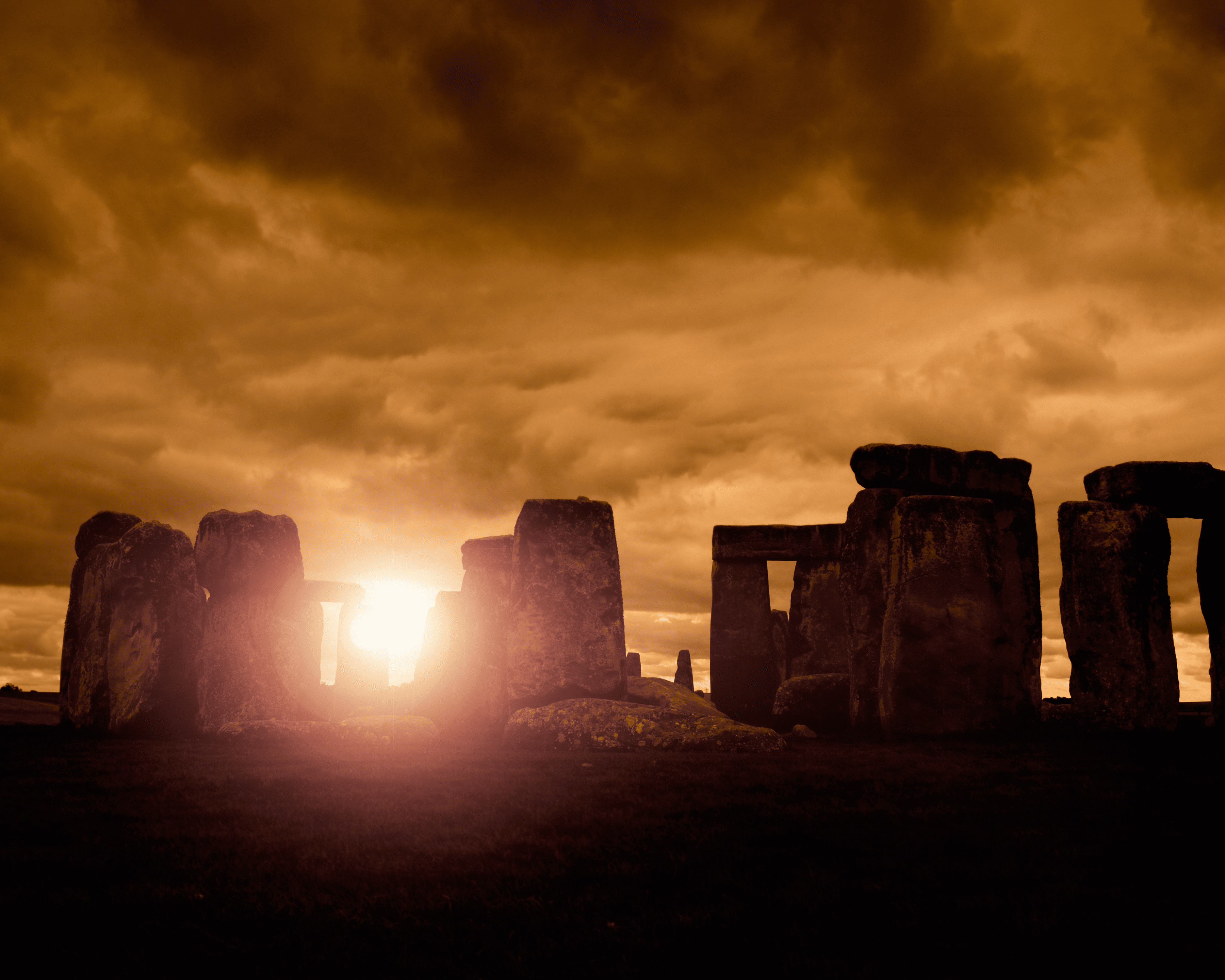
Moreover, there are debates about whether Stonehenge was entirely built from scratch or if it underwent a process of rebuilding or modifications over time. Some scholars argue that certain elements of the site may have been reconstructed during different periods in history, while others believe that its original purpose evolved through various cultural influences. The ongoing discussion around these theories adds another layer of intrigue to the enigma that is Stonehenge.
| Stonehenge Fact | Detail |
|---|---|
| Construction Period | From around 3000 BC to 2000 BC (Neolithic and Bronze Age) |
| Stone Weight | Up to 50 tons each |
| Purpose | Potential alignment with celestial events, such as the Winter Solstice |
Theories and Controversies: Who suggested re-erecting Stonehenge?
The debate over whether the stone circles of Avebury and Stonehenge were rebuilt has been a topic of fascination for archaeologists and historians for centuries. Theories and controversies surrounding the origins and construction of these ancient monuments continue to intrigue experts and enthusiasts alike as they seek to unravel the mysteries that shroud these enigmatic sites.
Historical Records and Accounts
One of the primary sources of contention regarding the construction of Avebury and Stonehenge is the lack of comprehensive historical records or accounts that provide definitive answers. While some written records and archaeological findings shed light on the possible origins and purposes of these stone circles, there is still much speculation surrounding their actual construction. Different interpretations of these records have led to various theories about whether the stone circles were initially built as we see them today or if they underwent significant reconstruction at some point in history.
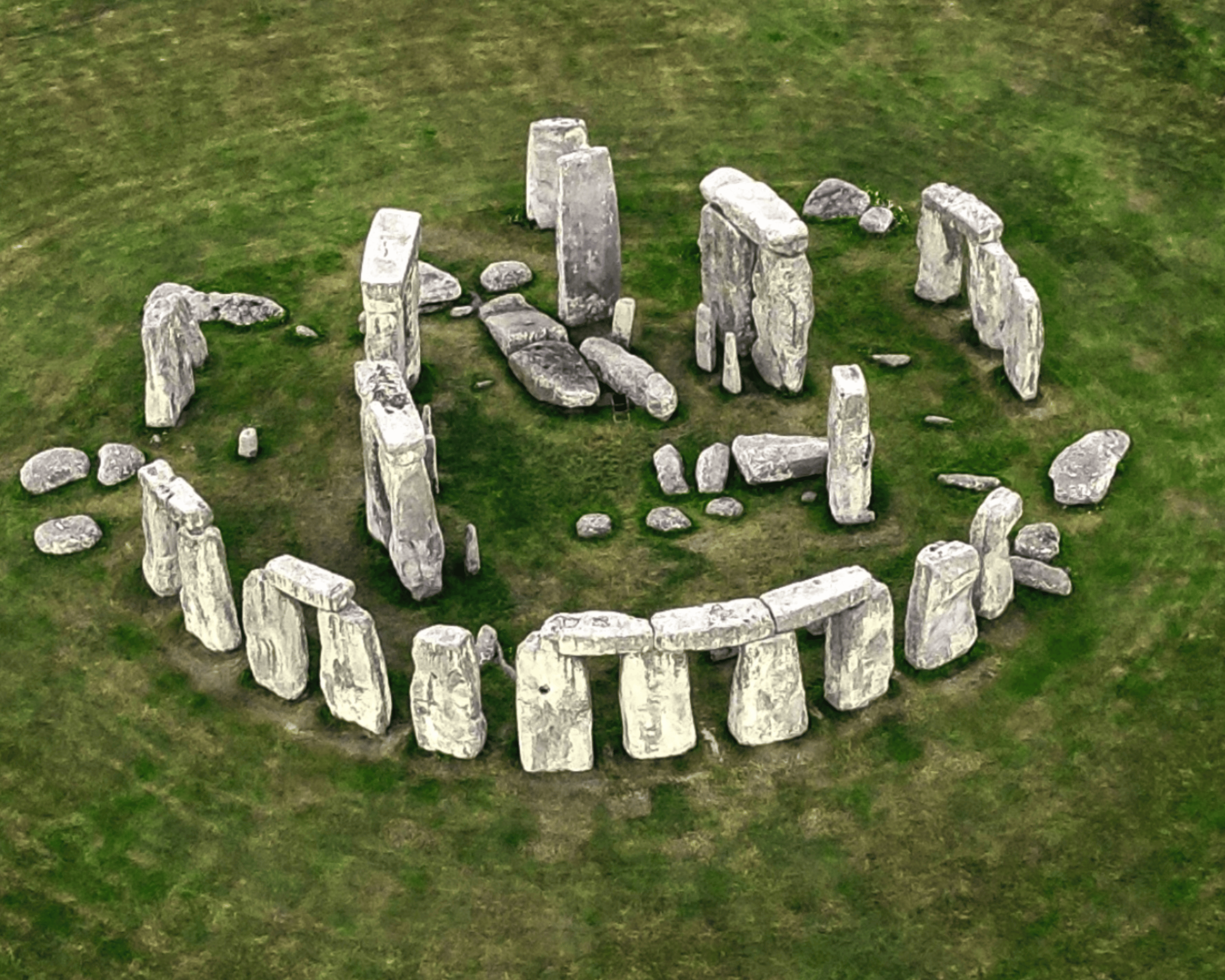
William Stukeley was a notable antiquarian and one of the first to document the prehistoric monuments of Stonehenge and Avebury. Although he did not rebuild these monuments, he played a significant role in their preservation and study. Various civilizations carried out the rebuilding of Stonehenge and Avebury over several centuries, and many theories exist regarding their origins and purposes.
Indigo Jones
According to Indigo Jones, when he compares two types of circular temples. Referring to Vitruvius, he stated, “There were amongst others two Forms of round Temples, commonly in use amongst them, the one called Monopteros (Figure 1), the other Peripteros” (Figure 2) (Vitruvius 1567: IV, 7; Jones 1971: 51).
Jones had mentioned that Peripteros “has the Cell enclosed about with a continued Wall, and at a proportionate Distance from it, the Columns place which made a Portico round about it, clean different from Stone-Heng”, while monopteros was “made open, and instead of a Wall encompassed with a row of pillars only, having no enclosed Cell within it at all, as much conducing to our purpose in hand”. According to Newman 1992: 48, Jones had noted on the illustration of a Monopteros in his copy of Vitruvius, “the one without sell and only with Colloms/the other winged about”.

Jones stressed the relevance of Monopteros to Stonehenge, quoting Barbaro in Italian: “I believe that Temple without Walls (speaking of the Monopteros aforesaid) had a relation to Coelum (Heaven) because the effects thereof are openly displayed to the full view of all Men” (Jones 1971: 71). For Jones the evolution would be a henge.
The changes had taken place for architects disdaining usual and common Forms, of the aforesaid forms (monopteros and peripteros) composed one. For taking the outward Circle from the Monopteros, he also made it open. Still, instead of the continued Wall circularly enclosing the Cell of the Peripteros, he made only a Hexagon about the Cell at Stone-Heng, leaving the same open like Manner (Jones 1971: 51).
Reconstruction Theories
Some experts argue that the stone circles at both Avebury and Stonehenge may have been extensively rebuilt or modified over time by the same ancient civilizations that originally erected them or by later societies that sought to repurpose these awe-inspiring structures. These reconstruction theories propose that changes to the layouts or arrangements of the stones could have occurred at different stages in history, leading to alterations in their appearances and functions.
Controversies and Counterarguments
On the other hand, there are staunch opponents to the idea that significant reconstruction occurred at Avebury and Stonehenge. These scholars maintain insufficient evidence to support such claims and suggest alternative explanations for any perceived changes in the stone circles’ designs over time. Controversies surrounding carbon dating, geological analysis, and other scientific methods used in archaeological research continue to fuel debates about whether or not these ancient monuments were rebuilt.
As researchers delve deeper into the complexities of Avebury and Stonehenge, it becomes apparent that uncovering the truth behind their construction will require a multifaceted approach considering a wide range of evidence from various disciplines. The ongoing discussions about potential reconstructions will undoubtedly contribute to our evolving understanding of these remarkable prehistoric sites.
Archaeological Evidence
Archaeologists and historians have long debated whether the stone circles of Avebury and Stonehenge were rebuilt. The archaeological evidence surrounding these ancient sites provides valuable insight into the construction and origins of these monumental stone structures. Researchers have shed light on the truth behind these enigmatic stones through careful excavation and analysis.
The use of Stonehenge as a cremation cemetery provides profound insight into the changing mortuary culture of the various periods. The West Kennet Long Barrow (included in the Avebury and Stonehenge UNESCO World Heritage Site) is the largest Neolithic tomb in southern England. Many other burial sites within this area show changing burial practices.
1. Excavations at Avebury: Archaeological digs at Avebury have revealed fascinating details about the construction and history of the stone circles. The discovery of buried megaliths, post holes, and artefacts has provided evidence that the site underwent multiple phases of construction and modification over centuries. These findings suggest that the stone circles were rebuilt at different times, adding layers to its complex history.
Alexander Keiller, a marmalade millionaire, dedicated over a decade of his life to conducting excavations in the Avebury area between 1925 and 1939. During this time, he not only conducted extensive research but also owned the grand Avebury Manor and the sprawling estate that surrounded it. His excavation efforts were considered groundbreaking and helped to shed light on the rich history of the Avebury area. In 1939, when Keiller set about renovating and re-erecting the henge, he employed Swindon builder Edwin Bradley to reconstruct the Neolithic stone circle. Visit the Alexander Keiller Museum there.
2. Stonehenge’s Evolution: Similarly, excavations at Stonehenge have uncovered significant evidence pointing to periods of rebuilding and alteration. The uncovering of ancient tools, cremated remains, and other archaeological finds have supported the theory that Stonehenge was not simply built in one phase but evolved through various stages of construction and modification.
3. Dating Techniques: In addition to physical remains, dating techniques such as radiocarbon dating and thermoluminescence have been used to establish a timeline for the construction and rebuilding of these ancient sites. These scientific methods have provided valuable data that supports the idea that both Avebury and Stonehenge were subject to rebuilding activities throughout their history.
As research continues, archaeologists will likely uncover even more evidence to support or refute the theories surrounding the rebuilding of Avebury and Stonehenge. We can continue to unravel the mysteries surrounding these iconic stone circles by carefully analyzing this archaeological evidence.
Conclusion
As we come to the end of our exploration into the mysteries of Avebury and Stonehenge, it is clear that these ancient stone circles continue to captivate and bewilder scholars and visitors alike. The history of Avebury reveals a complex network of Neolithic monuments, while Stonehenge stands as one of the most iconic megalithic structures in the world. However, the question remains: were these stone circles rebuilt at some point in their long history?
Despite the theories and controversies surrounding the reconstruction of these sites, archaeological evidence has provided valuable insights into their origins. The discovery of tool marks, postholes, and other intriguing features has shed light on how our ancient ancestors created these monumental structures. While there is still much debate and speculation, it is evident that both Avebury and Stonehenge hold an essential place in the prehistoric landscape of southern England.
The building of Avebury Stone Circle
According to Simon Heptinstall for the Mail Online in his article, Revealed: The World Heritage ancient stone circle at Avebury is FAKE – with photographs showing that the stones were actually erected in the 1930s… and some are upside down. He continues, “Photographs released by Historic England in 2023 revealed a chapter in the site’s history that many aren’t aware of”.
As previously explained, the images on the Historic England website show a group of men in the 1930s working for the builder Edwin Bradley (hired by the millionaire Alexander Keiller) erecting the stones. The archival images provide a glimpse into the restoration work that took place 90 years ago.
The workers used trucks, ropes, and pulleys to transform an empty grassy area into the henge we know today. The old photographs show the team excavating hidden stones, moving them to their chosen positions, and standing them upright on newly constructed concrete plinths. These plinths were then covered with soil to give the appearance that the stones were standing directly on the ground. Historic England released 550 digitized photographic slides of the rebuilding project, freely available to the public. Click here for The Alexander Keiller Collection.
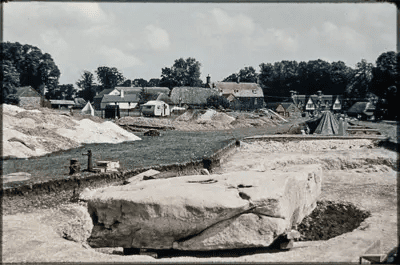
The restoration project of Stonehenge
A major engineering project happened in 1914, and a photograph from 1914 shows one of the lintels being replaced during restoration work on the Stonehenge Sarsen Circle. Further associated excavations of Stonehenge began in 1958 and continued into 1959. The team of Atkinson, Piggott, and Stone worked together to do archaeological work. They re-erected the trilithon, which had been in the same position for 161 years. They also put an upright and a lintel back in place that was part of the outer circle. One of the large sarsens from the inner horseshoe was set in concrete, and a large hole at the bottom was filled in. The sarsen bases were also set in concrete to prevent them from moving in the future. Lastly, six fallen bluestones were straightened and lifted.
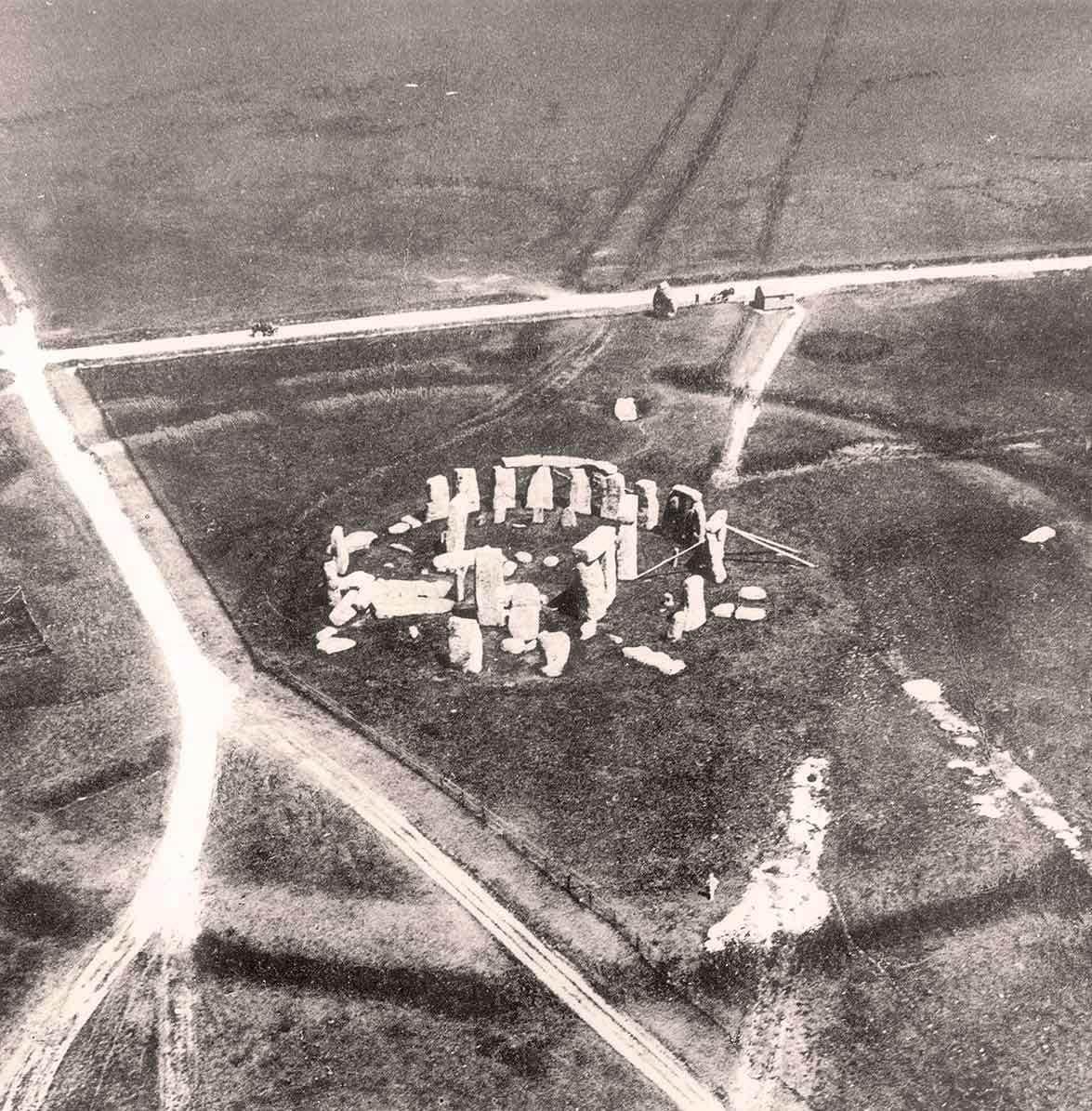
In conclusion, the enigmatic origins of Avebury and Stonehenge continue to fascinate researchers and enthusiasts from around the world. Whether or not these stone circles were rebuilt remains a topic of debate, but what is undeniable is their enduring significance in our understanding of ancient civilizations. As we strive to uncover more about these remarkable sites, we are reminded that they stand as testaments to the ingenuity and vision of those who came before us.
Frequently Asked Questions
What Is the Difference Between Stonehenge and Avebury?
The main difference between Stonehenge and Avebury lies in their construction and layout. Stonehenge consists of a circular setting of large standing stones, while Avebury is a larger complex with a circular bank and ditch containing three stone circles.
Is Stonehenge Older Than Avebury?
Stonehenge is older than Avebury. Its construction dates back to around 3000 BC, while Avebury’s main construction phase occurred around 2600 BC.
Did the Druids build Avebury and Stonehenge?
For those interested in the Druids, we have a magazine dedicated to them, Issue 2 [January 2022]. There is a widespread belief that the Druids constructed the ancient stone circles of Avebury and Stonehenge. However, historians and archaeologists have debunked this theory, finding evidence that these prehistoric monuments were built by earlier cultures, possibly as early as 5000 years ago.
Is Avebury and Stonehenge Free to Visit?
Yes, Avebury is free to visit for the public. Visitors can freely explore the stone circles, walk along the ancient avenues, and even have picnics in the surrounding grassy areas without paying an entrance fee. However, Stonehenge is a paid site. For those who are members of the National Trust, you can visit Stonehenge for free.
What Is Special About Avebury?
One particular aspect of Avebury is its sheer size, as it encompasses the largest stone circle in Europe. The site also features prehistoric burial mounds, earthworks, and an enclosing bank and ditch encircles the village.
Can You Touch Avebury Stones?
Visitors can touch the stones at Avebury; however, care must be taken to avoid causing damage or erosion to these ancient structures. This hands-on interaction allows for a more intimate connection with the history and spirituality of the site.
